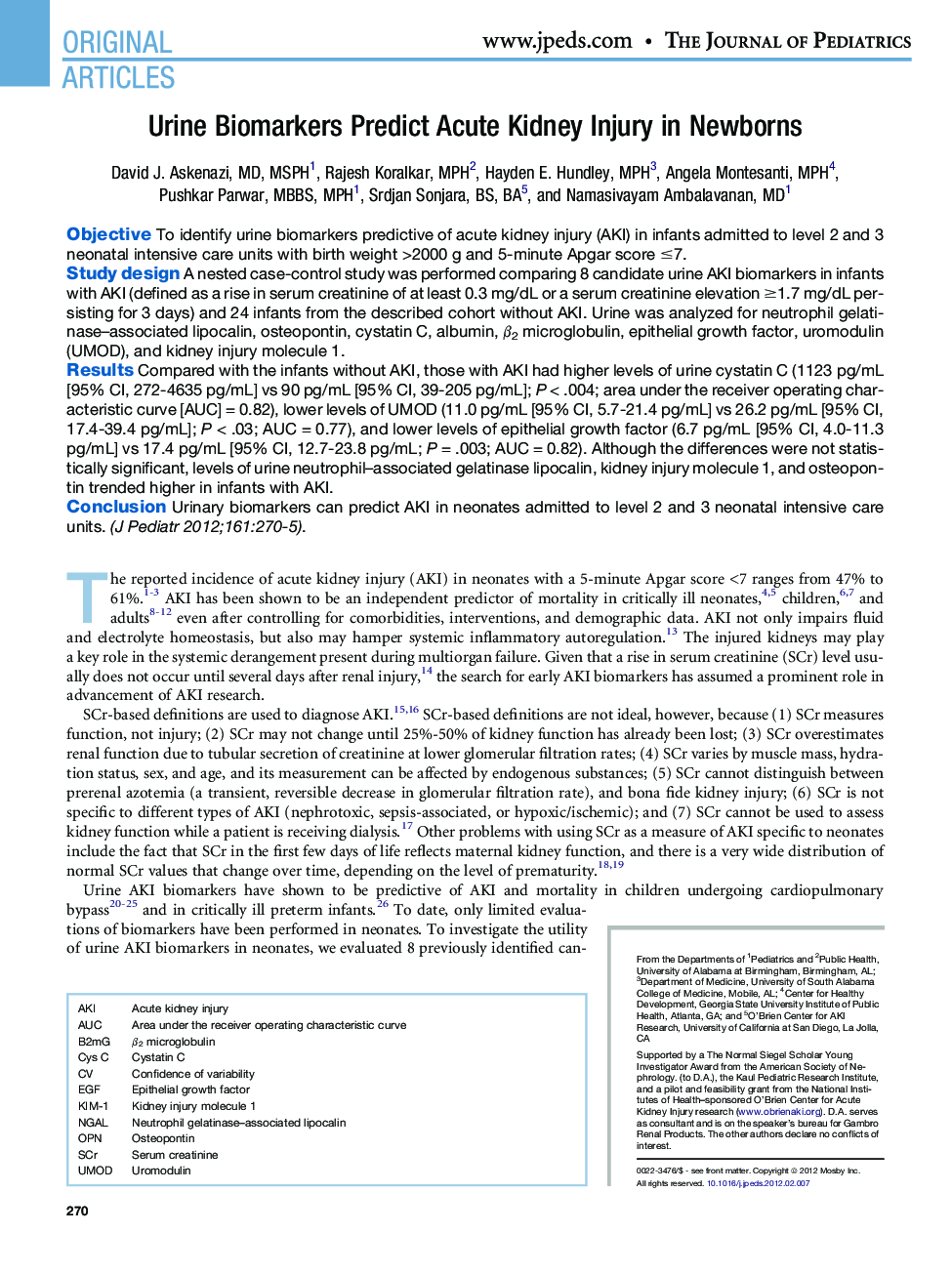| Article ID | Journal | Published Year | Pages | File Type |
|---|---|---|---|---|
| 6223093 | The Journal of Pediatrics | 2012 | 7 Pages |
ObjectiveTo identify urine biomarkers predictive of acute kidney injury (AKI) in infants admitted to level 2 and 3 neonatal intensive care units with birth weight >2000 g and 5-minute Apgar score â¤7.Study designA nested case-control study was performed comparing 8 candidate urine AKI biomarkers in infants with AKI (defined as a rise in serum creatinine of at least 0.3 mg/dL or a serum creatinine elevation â¥1.7 mg/dL persisting for 3 days) and 24 infants from the described cohort without AKI. Urine was analyzed for neutrophil gelatinase-associated lipocalin, osteopontin, cystatin C, albumin, β2 microglobulin, epithelial growth factor, uromodulin (UMOD), and kidney injury molecule 1.ResultsCompared with the infants without AKI, those with AKI had higher levels of urine cystatin C (1123 pg/mL [95% CI, 272-4635 pg/mL] vs 90 pg/mL [95% CI, 39-205 pg/mL]; P < .004; area under the receiver operating characteristic curve [AUC] = 0.82), lower levels of UMOD (11.0 pg/mL [95% CI, 5.7-21.4 pg/mL] vs 26.2 pg/mL [95% CI, 17.4-39.4 pg/mL]; P < .03; AUC = 0.77), and lower levels of epithelial growth factor (6.7 pg/mL [95% CI, 4.0-11.3 pg/mL] vs 17.4 pg/mL [95% CI, 12.7-23.8 pg/mL; P = .003; AUC = 0.82). Although the differences were not statistically significant, levels of urine neutrophil-associated gelatinase lipocalin, kidney injury molecule 1, and osteopontin trended higher in infants with AKI.ConclusionUrinary biomarkers can predict AKI in neonates admitted to level 2 and 3 neonatal intensive care units.
